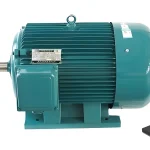In electric vehicles (EVs), the inverter converts DC battery power into AC to drive the motor. At the heart of this system lie MOSFETs (MetalRDS(on))—making thermal management vital for reliability and efficiency.
How MOSFETs Impact Inverter Heat Generation
- 1.Power Switching: MOSFETs switch thousands of times per second to modulate voltage. Each transition dissipates energy as heat, especially at high frequencies.
- 2.**OnRDS(on)RDS(on)), causing I2RI2R losses proportional to current.
- 3.Thermal Runaway RiskRDS(on)RDS(on), creating a feedback loop of higher losses and more heat—potentially destroying the device.
Thermal Management Strategies for MOSFETs
1. Advanced MOSFET Design
- Low RDS(on)RDS(on) MOSFETsRDS(on)RDS(on) by 50% compared to silicon.
- Optimized Packaging: Direct-bonded copper (DBC) substrates and exposed thermal pads enhance heat transfer from MOSFETs to cooling systems.
2. Active Cooling Systems
- Liquid Cooling: Coolant channels integrated into the inverter housing directly absorb heat from MOSFETs. For example, Tesla’s inverters use a liquid-cooled cold plate to maintain MOSFET temperatures below 125°C.
- Heat Sinks: Aluminum heat sinks with thermal interface materials (TIMs) dissipate heat into the ambient environment.
3. Thermal Monitoring and Control
- Temperature Sensors: Placed near MOSFETs, these sensors trigger dynamic adjustments. For instance, reducing switching frequency during overheating.
- Predictive Algorithms: AI-driven models optimize gate driver timing to minimize switching losses under varying loads.
4. System-Level Integration
Waste heat from MOSFETs can be repurposed to warm the EV cabin or battery in cold conditions, improving overall energy efficiency.
Challenges and Innovations
Current challenges include uneven heat distribution across MOSFET arrays and coolant leakage risks. Emerging solutions include:
- Phase-Change Materials (PCMs) to buffer transient thermal loads.
- Hybrid Cooling (liquid + heat pipes) for faster response.
Conclusion
MOSFETs are pivotal to inverter performance but require meticulous thermal management to ensure longevity and safety. As EV power demands grow, innovations in MOSFET technology and cooling systems will remain central to advancing electric mobility.




